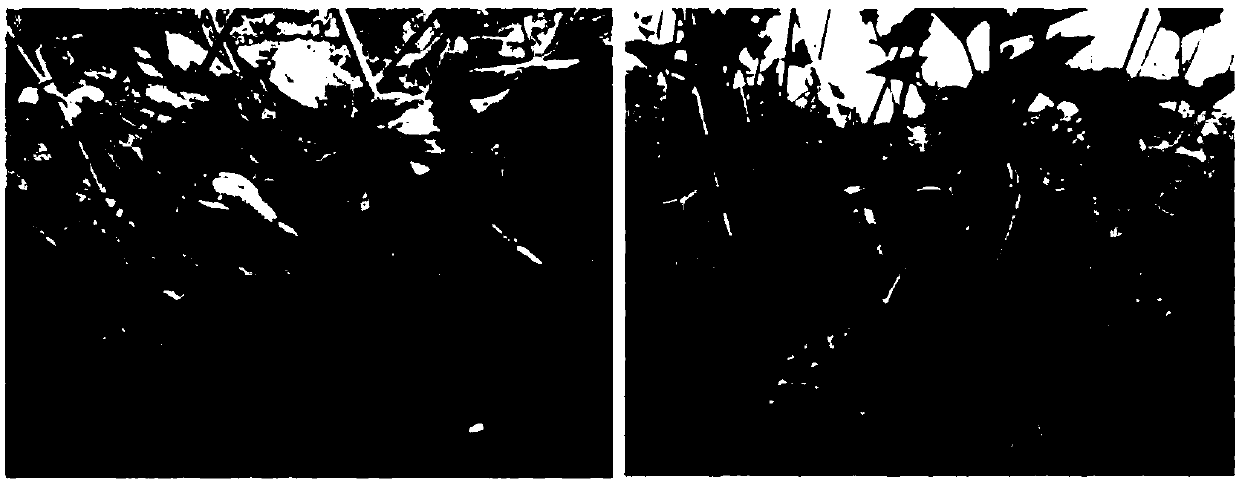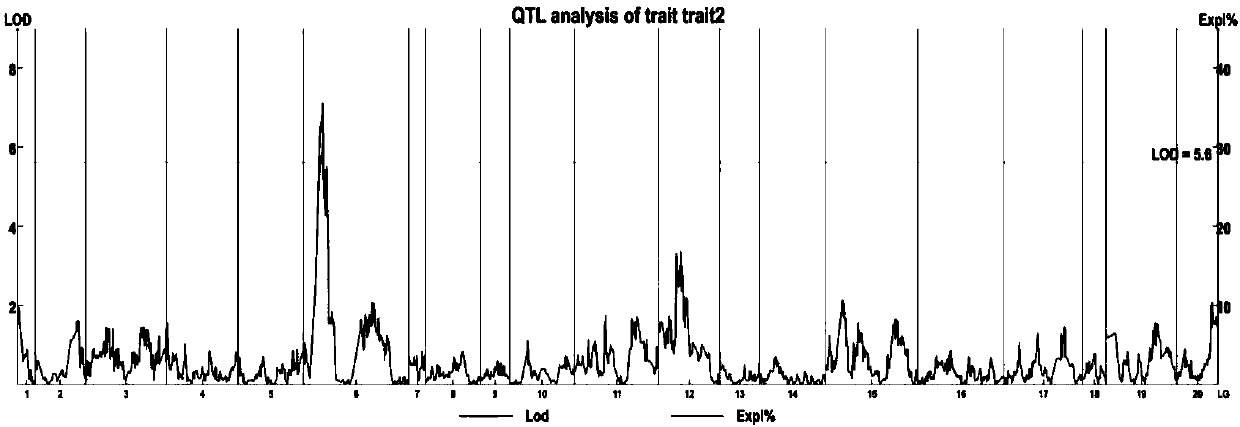Indel molecular marker closely linked with pumpkin photoperiod insensitivity and application of indel molecular marker
A molecular marker and photoperiod technology, which can be used in the determination/inspection of microorganisms, angiosperms/flowering plants, DNA/RNA fragments, etc. The effect of high contribution rate and shortened time
- Summary
- Abstract
- Description
- Claims
- Application Information
AI Technical Summary
Problems solved by technology
Method used
Image
Examples
Embodiment 1
[0029] 1. Construction and Genetic Analysis of Genetic Populations
[0030] 1. Test materials Plant materials: photoperiod-insensitive and photoperiod-sensitive materials are high-generation inbred lines obtained locally in Guangdong, named PPIS and PPS respectively, see figure 1 . PPIS and PPS were crossed to obtain F1, and F1 was selfed to obtain F2, which were used for genetic analysis and mapping populations.
[0031] 2. The determination of the photoperiod insensitivity of the tested materials and the analysis of hereditary laws.
[0032] 162 individual plants of the F2 population were sown in April, and the flowering period was long-day. The flowering node of the first female flower was investigated, and Excel 2016 was used to process the data to check whether it obeyed the normal distribution.
[0033] 2. Construction of Pumpkin Genetic Map and Preliminary Positioning of Peel Color
[0034] 1. Extraction of pumpkin genomic DNA
[0035] The genomic DNA of pumpkin pa...
Embodiment 2
[0045] The method of Example 1 was used to carry out PCR amplification between the two parents, and polyacrylamide gel electrophoresis was used for detection. The performance of the parents was specific, and 33 individual plants of the F2 population were identified. The results are shown in image 3 .
[0046] image 3 It is the PCR amplification result of the indel molecular marker SEQ7593: P1 and P2 are the product band patterns of the photoperiod-insensitive female parent and the photoperiod-sensitive male parent respectively, wherein the length of the fragment amplified by P1 is 280bp; the length of the fragment amplified by P2 is 275bp . There are two types of bands in F1, there are 280bp and 275bp fragments, and there are three types of P1, P2 and F1 in the random individual plants of the F2 population.
[0047] Combined with individual plant phenotypes, it was found that the photoperiod-sensitive phenotypes were consistent with the results of PCR. The above-mentioned...
PUM
 Login to View More
Login to View More Abstract
Description
Claims
Application Information
 Login to View More
Login to View More - R&D
- Intellectual Property
- Life Sciences
- Materials
- Tech Scout
- Unparalleled Data Quality
- Higher Quality Content
- 60% Fewer Hallucinations
Browse by: Latest US Patents, China's latest patents, Technical Efficacy Thesaurus, Application Domain, Technology Topic, Popular Technical Reports.
© 2025 PatSnap. All rights reserved.Legal|Privacy policy|Modern Slavery Act Transparency Statement|Sitemap|About US| Contact US: help@patsnap.com



